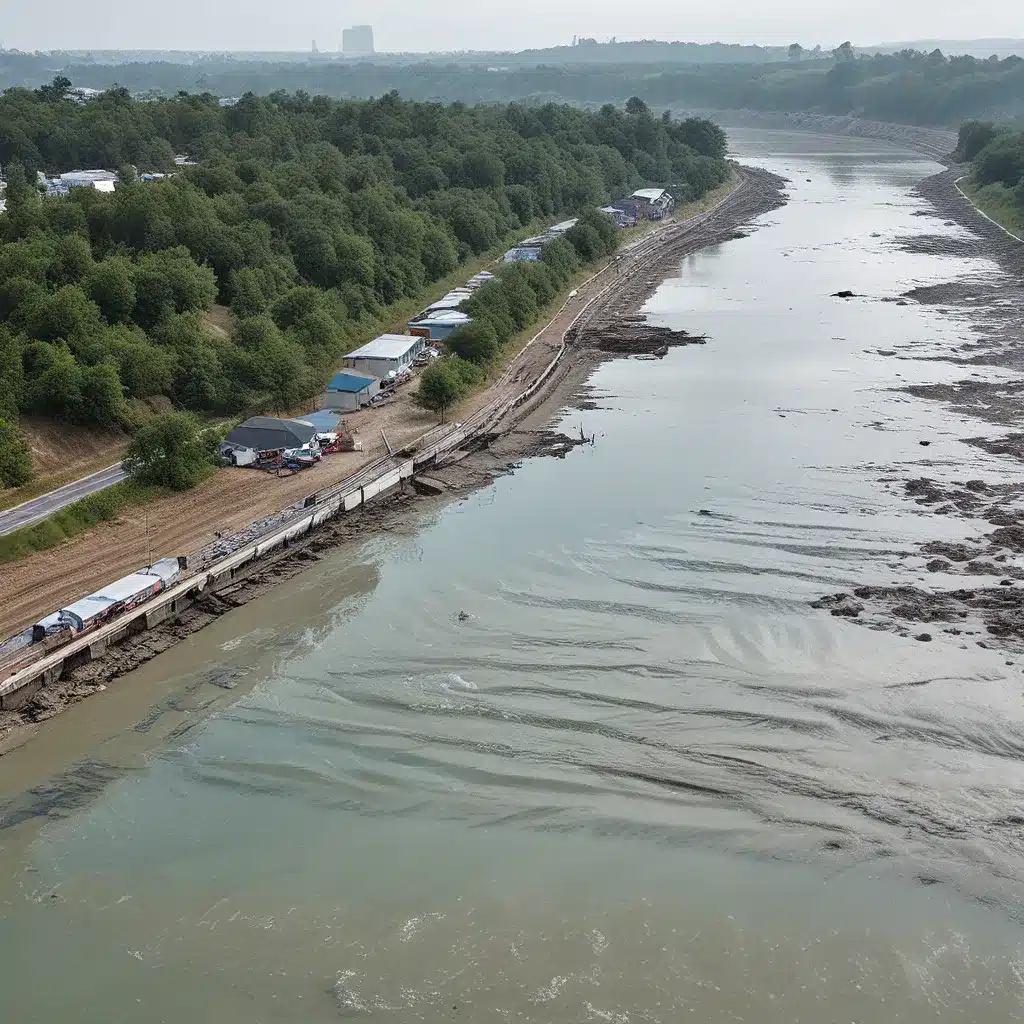
Navigating the Uncharted Waters of Disaster Preparedness
When the unexpected strikes, are we truly ready? As the climate continues to shift and extreme weather events become more commonplace, the need for robust environmental services has never been more paramount. But how do we ensure that our water treatment systems and ecological safeguards can withstand the toughest of storms?
Join me as we dive deep into the world of aqua resilience – the art of fortifying our environmental infrastructure to weather even the most catastrophic events. From innovative water purification techniques to nature-based solutions, we’ll explore the cutting-edge strategies that are shaping the future of environmental resilience.
Designing Water Systems for the Unpredictable
As I stared out over the swelling river, the roar of the floodwaters was a stark reminder of nature’s raw power. It was just last year that our community had been devastated by a once-in-a-century storm, leaving homes underwater and our water treatment plant overwhelmed. The damage was staggering, and the road to recovery felt daunting.
Army Corps of Engineers research has shown that traditional water treatment facilities often struggle to withstand the impacts of extreme weather events. Surging floodwaters can overwhelm intake systems, while prolonged droughts can strain water reserves. And let’s not forget the threat of power outages, which can grind these critical operations to a halt.
But what if we could design water systems that not only withstand these challenges, but actually thrive in the face of adversity? That’s the driving force behind the concept of aqua resilience – the idea of creating environmental infrastructure that is adaptable, redundant, and self-sustaining.
Harnessing Nature’s Resilience
As I continued my investigation, I stumbled upon the work of a local organization that was taking a radically different approach to water management. Instead of relying solely on engineered solutions, they were turning to nature for inspiration.
Beaver-engineered wetlands, it turns out, can play a crucial role in bolstering aqua resilience. These industrious rodents, with their remarkable ability to create dams and ponds, are natural water regulators, capable of mitigating the impacts of both floods and droughts.
“Beavers are the unsung heroes of the water world,” explains the organization’s lead ecologist. “Their dams act as speed bumps, slowing the flow of water and reducing erosion during high-flow events. And the ponds they create help recharge groundwater supplies, ensuring a steady supply even when surface water is scarce.”
I was fascinated by the idea of harnessing the power of nature to fortify our water systems. Could these furry ecosystem engineers hold the key to unlocking a more resilient future?
Diversifying our Defenses
Of course, relying on beavers alone isn’t a silver bullet. As I delved deeper, I discovered that a truly comprehensive approach to aqua resilience requires a multifaceted strategy.
One promising avenue is the integration of green infrastructure – natural or nature-based solutions that complement traditional “gray” engineering. This might include everything from constructed wetlands and permeable pavement to urban reforestation and rain gardens. These elements work in harmony to absorb, filter, and slowly release water, reducing the burden on conventional water treatment systems.
Tree equity initiatives are also gaining traction as a way to bolster urban resilience. By ensuring equitable access to green spaces and robust tree canopies, communities can mitigate the urban heat island effect, improve air quality, and enhance local water cycles.
“It’s all about creating a diverse, layered defense,” explains a water resource engineer. “We need to leverage both natural and engineered solutions, so that when one element is pushed to its limits, the others can pick up the slack. Redundancy is key to weathering the unexpected.”
Fostering a Culture of Preparedness
But building aqua resilience isn’t just about technical solutions – it’s also about cultivating a culture of preparedness within our communities. After all, even the most sophisticated water systems are only as strong as the people who maintain and operate them.
That’s why organizations like Inland Waters are investing heavily in training programs and emergency response planning. By equipping water treatment professionals with the skills and knowledge to adapt to rapidly changing conditions, they’re ensuring that our critical infrastructure can withstand the test of time.
“It’s not enough to just have the right equipment and infrastructure in place,” says the company’s CEO. “We also need to empower our frontline workers with the tools and decision-making autonomy to respond quickly and effectively in a crisis.”
Embracing the Uncertainty Ahead
As I reflect on my journey into the world of aqua resilience, I’m struck by the sense of both excitement and trepidation. The challenges we face in safeguarding our water resources are daunting, but the innovative solutions on the horizon hold the promise of a more secure and sustainable future.
Will we have the foresight and fortitude to embrace the uncertainty that lies ahead? Only time will tell. But one thing is certain: by harnessing the power of nature, diversifying our defenses, and cultivating a culture of preparedness, we just might be able to weather even the fiercest of storms.
So let’s dive in, shall we? The future of our aquatic ecosystems depends on it.


